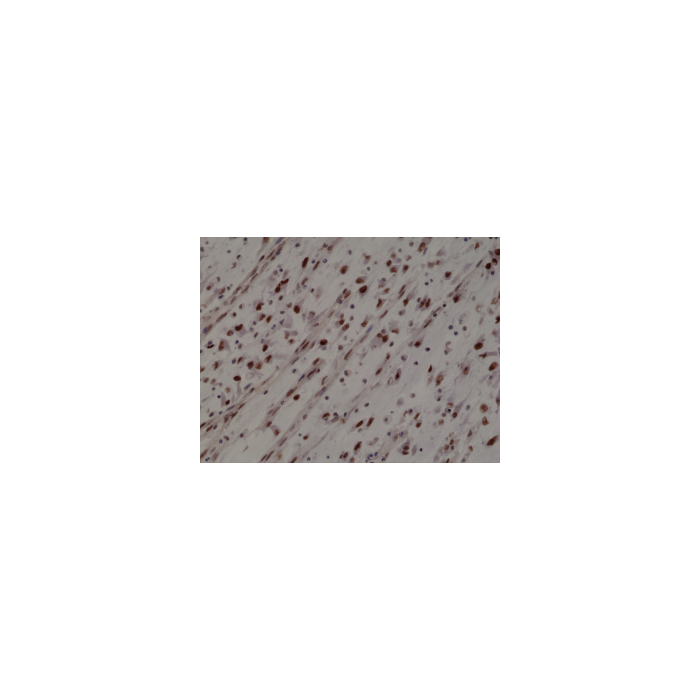Cookie Policy: This site uses cookies to improve your experience. You can find out more about our use of cookies in our Privacy Policy. By continuing to browse this site you agree to our use of cookies.
RevMab
anti-MyoD1 (human), Rabbit Monoclonal (RM369)

| Product Details | |
|---|---|
| Synonyms | Myoblast Determination Protein 1; Class C Basic Helix-loop-helix Protein 1; bHLHc1; Myf-3 |
| Product Type | Recombinant Antibody |
| Properties | |
| Clone | RM369 |
| Isotype | Rabbit IgG |
| Source/Host | Rabbit |
| Immunogen/Antigen | A peptide corresponding to residues near N-terminus of human MyoD1 (Myoblast determination protein 1). |
| Application |
Immunohistochemistry (IHC): 1:500-1:1000 dilution |
| Crossreactivity | Human |
| Specificity |
This antibody reacts to human, mouse, and rat MyoD1 (Myoblast determination protein 1) . |
| Purity | Protein A purified. |
| Purity Detail | Protein A affinity purified from an animal origin-free culture supernatant. |
| Concentration | N/A |
| Formulation | Liquid. 50% Glycerol/PBS with 1% BSA and 0.09% sodium azide. |
| Isotype Negative Control | |
| Other Product Data |
Click here for Original Manufacturer Product Datasheet |
| Accession Number | P15172 |
| Declaration | Manufactured by RevMab Biosciences. |
| Shipping and Handling | |
| Shipping | BLUE ICE |
| Long Term Storage | -20°C |
| Handling Advice | Avoid freeze/thaw cycles. |
| Use/Stability | Stable for at least 1 year after receipt when stored at -20°C. |
| Documents | |
| Product Specification Sheet | |
| Datasheet |
 Download PDF Download PDF |
MyoD (MyoD1; Myoblast Determination Protein 1) plays a major role in regulating muscle differentiation. It belongs to a family of proteins known as myogenic regulatory factors (MRFs). These bHLH (basic helix loop helix) transcription factors act sequentially in myogenic differentiation. Vertebrate MRF family members include MyoD1, Myf5, myogenin and MRF4 (Myf6). MyoD is one of the earliest markers of myogenic commitment. MyoD is expressed at extremely low and essentially undetectable levels in quiescent satellite cells, but expression of MyoD is activated in response to exercise or muscle tissue damage. High MyoD expression represses cell renewal, promotes terminal differentiation and can induce apoptosis. The function of MyoD in development is to commit mesoderm cells to a skeletal myoblast lineage, and then to regulate that continued state. MyoD may also regulate muscle repair. MyoD mRNA levels are also reported to be elevated in aging skeletal muscle. One of the main actions of MyoD is to remove cells from the cell cycle (halt proliferation for terminal cell cycle arrest in differentiated myocytes) by enhancing the transcription of p21 and myogenin. MyoD, as a transcription factor, can also direct chromatin remodelling through binding to a DNA motif known as the E-box.





